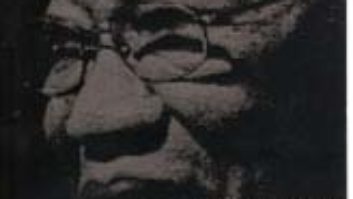We try not to change the EQ or the color or the intention of the show. We try to, as much as we can, preserve the original intent of the mix.
— Chris Salmassy
Beginning in the mid-1950s, Hollywood churned out a flood of Biblical film epics like The Ten Commandments, The Robe, The Bible and Cleopatra. One of the most successful in that genre was The Greatest Story Ever Told.
Nominated for five Academy Awards, this 1965 film, which covered the life and death of Christ, featured a star-studded cast, including Charlton Heston, Sidney Poitier, Claude Rains, Telly Savalas, Angela Lansbury, Dorothy McGuire, Donald Pleasence, John Wayne, Roddy McDowall, Ed Wynn, Jose Ferrer, Max von Sydow and others.
MGM Home Video has gone back and restored the original 65 millimeter print and released a double-DVD set that contains the Roadshow version, 5.1 surround mix and a 16×9 transfer — all in time for Holy Week. The set (one DVD-9 and a DVD-5) also includes a new documentary with on-camera interviews with the director and cast. There is also a “making of” featurette, a photo gallery, as well as the usual scene selection and trailer.
The audio clean-up and mix was done at Chace Productions in Burbank, Calif.
“The source track was a 35-millimeter, 6-track mag, which was slightly warped and shrunken,” says Ivan Galan, who cleaned up the audio. “We played it back on a Sondor Oma Se Chace, which is a magnetic film dubber that is specially designed to handle ‘problem’ films such as this. It was taken directly into a Sonic Solutions digital workstation equipped with NoNoise software. It was here we were able to conform the audio to picture and then address audio anomalies. These anomalies not only consisted of things that seep into a track over the years due to wear and tear — such as hums, pops and dropouts — but also included editorially correcting phase relationships of the 6-tracks for use with modern playback equipment. It was standard practice to ‘phase flop’ mono-coincident material for different ‘perspectives’; this would cause problems in matrixing the track later on.”
Chris Salmassy mixed the audio in Chace’s THX pm3-certified Mix One. Salmassy worked on a Sony DMX-R100 console and monitored through the Apogee Sound MPTS-1 Theater System (LCR, LFE) and JBL 8330 surround speakers. The system is powered by Bryston amps.
“This type of show had a front end full of audio, and dialog was panning across; we had to make sure that the end result was compatible in both 5.1 and Dolby Pro Logic,” says Salmassy. “A lot of times, when those shows are decoded, they would have all sorts of problems with the audio going into the surrounds. We had to pay special attention to preserving the original intention of the dialog placement, as well as making sure that it didn’t end up with out-of-phase information throwing dialog into the surrounds. That was one of the challenges we were up against.
“A lot of times, when there is dialog in old theatrical presentations going into all three channels — left, center and right; or left-center, center and right-center — incorporating the left-center and right-center tracks can be problematic,” he continues. “That can be a hurdle, but in this film it was a small one. Once we found the proper balances, it didn’t pose too much of a problem at all.”
Salmassy, aware of modern sound jobs that sometimes call attention to themselves, was careful not to overly hype the track on The Greatest Story Ever Told.
“We try not to change the EQ or the color or the intention of the show,” he says. “We try to, as much as we can, preserve the original intent of the mix. When we create a surround from a mono surround or previous no-surround source, that is when a little EQ is needed. Sometimes I will do a little roll-off from the surround to not take away presence from the front end.
“When we created the subwoofer track, it was very sparse,” he continues. “So only in certain instances did I incorporate the sub track. It would be moments like a bunch of horses galloping by or legions of soldiers trampeling. We elected not to go over the top on the thunder sequences with Jesus up on the cross on the mountain, as it was already building up to that with the music and the sound effects. So we just maintained that. Very little was used, unlike a typical late-20th-century bombastic mix.
“Most people buying DVDs are expecting pretty big sound from contemporary films,” he concludes. “When they get these older films, they aren’t expecting to have such a wide-sounding track. In this case, the original 6-track audio that was used for the source of the 5.1 mix was really brought across successfully and maintained. The original sounded great, and we just enhanced it a little bit.”

